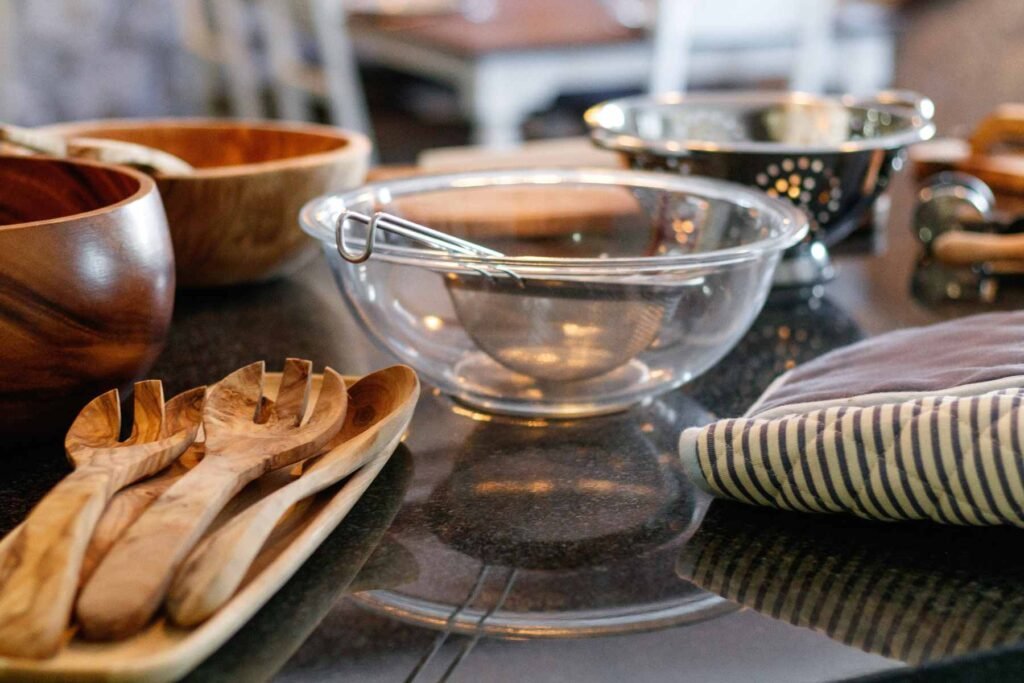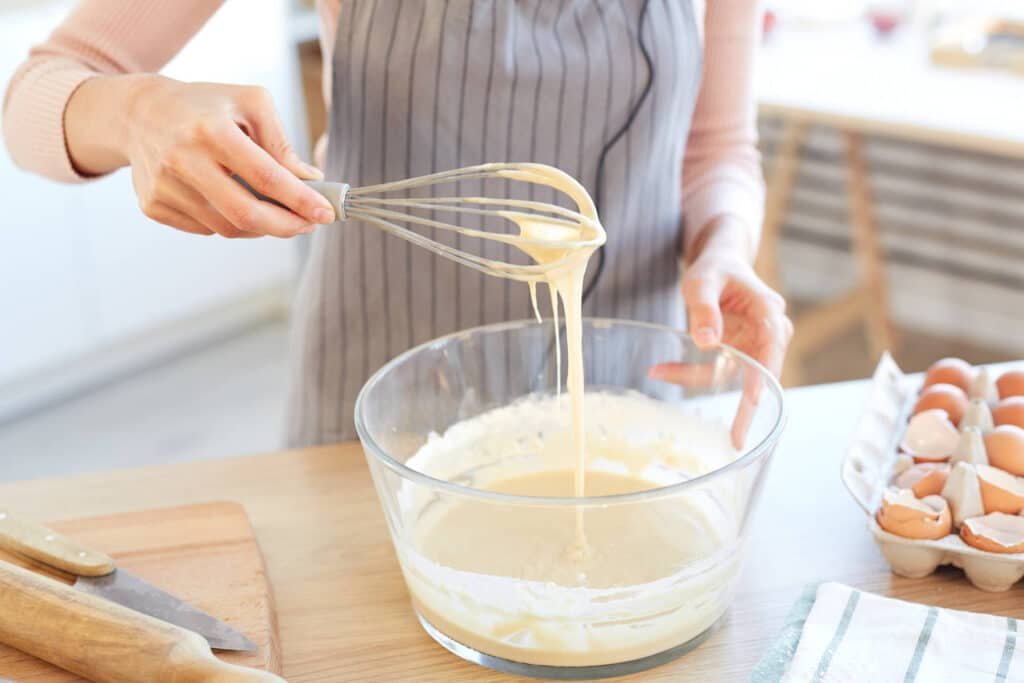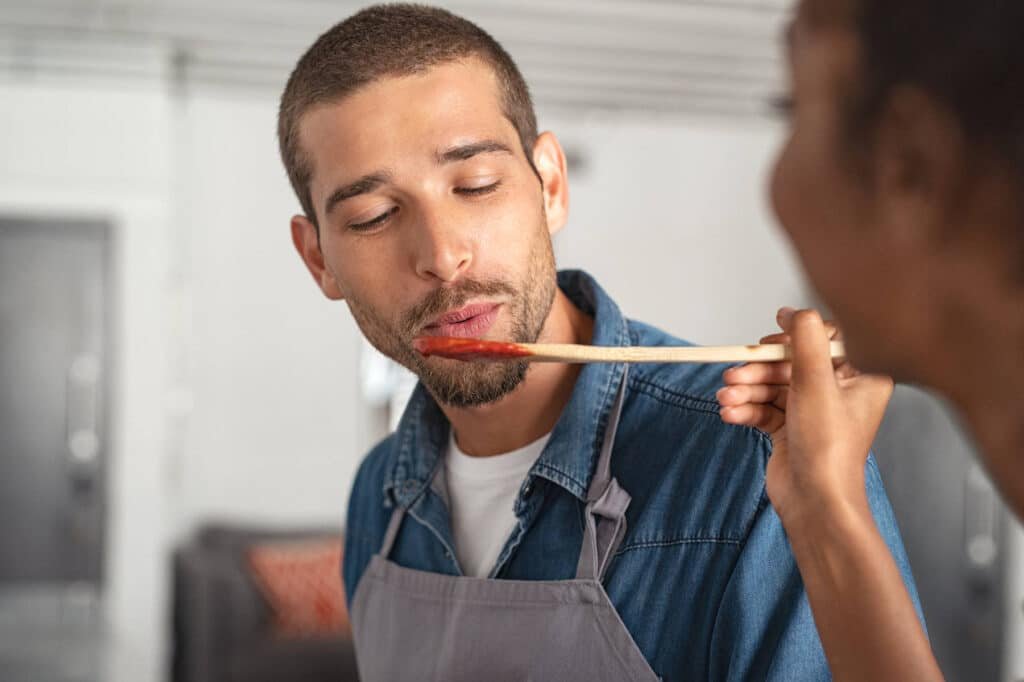I wanted to list the rules of writing about food and the things we can pay attention to in order to do our job better. I hope it will be useful for those who want to share their recipes with their loved ones and those who want to publish them. Even if you are not a writer, it will also shed light on what you can pay attention to when reading a recipe and how you can evaluate it.
It takes great skill to write a recipe that will guide every cook to the same delicious result. A minor error, such as an incorrect bill of materials or incorrect measurement, can cause the process to fail. So, when writing a recipe, be sure to choose each word very carefully and test your instructions before sharing them with others.
4 step Recipe Writing Guide
Begin
Design your recipe
A recipe is a set of steps that lead to a delicious result. In a way, it’s a gift from you to the people who read it. If you’re writing down a recipe that you’ve made so many times you could cook with your eyes closed, take a step back and think about how best to present it to others. Who will be the readers of this recipe and what is their way of cooking? The target audience should influence how you write your recipe.
If you’re writing down a family recipe to make sure it won’t be forgotten, authenticity will be important to you and your readers. You’ll need the exact ingredients and measurements, so future generations will be able to recreate Grandma’s cookies or Uncle Ben’s chili and taste a piece of family history in the process.
If your recipe is intended for the general public, tradition is much less important than taste or accessibility. Make sure readers are able to find the ingredients you list, and make sure the end result is good enough to satisfy readers.
Also consider the skill level of the readers. Consider if there are ways you could make the recipe easier to understand, especially for new cooks. If complicated cooking techniques are impossible to circumvent, describe the steps as clearly as possible.
Gather the ingredients
Decide what ingredients are needed for your recipe. You will probably need to cook the dish more than once to make changes, so make sure you have enough of each ingredient. Don’t forget to quantify water, ice, and any ingredients you might forget.

Gather your materials
Take out the pots, pans, spatulas, whisks, and any other equipment needed to make the recipe. If you normally use a special instrument, such as an electric mixer, specify whether people who do not have this instrument can still make the recipe by hand. You could provide alternative options and ideas, to make the recipe as accessible as possible.
Start cooking
Imagine cooking the recipe for the first time and making it the way you want your readers to make it. Start with the prep work, preheat the oven or stove and prepare the ingredients. During the process, pay attention to the steps and techniques you use, as well as the order in which you incorporate the ingredients.
Take notes of what you are doing. Write down the measurements used for each ingredient. Describe each step of the process using simple cooking and baking terminology. Be sure to write down each of the steps – you can edit them later if necessary.
Consider taking photos. Colorful photos detailing the recipe step by step can attract readers and provide useful information on complicated techniques. Try to take photos of each step you follow or have someone take some while you cook. Even if you don’t include detailed photos of the steps, you might at least have a photo of the finished dish.

Create the list of ingredients
Provide exact measurements and volumes
For each ingredient, write down exactly how much you use. List all quantities in consistent measurements, in imperial or metric units (or use both if desired.
Use consistent abbreviations for measurements. For example, c. c. or c. at s. for teaspoon or tablespoon.
If an ingredient doesn’t have a metric measurement, capitalize it. For example, “Olive Oil”.
List the ingredients in the order in which you use them
It is normal to list ingredients in the order in which they are used so that the reader can keep track of which ones have already been used.
List the ingredients used together in order of volume
For example, if you are writing a recipe for cake, all the dry ingredients will probably be mixed together at one time. Since you can’t list them in order of use, do it in order of volume: “2 cups flour”, “1 teaspoon baking soda”, “1/4 teaspoon salt” and so on.
Write the quantitative breakdown of ingredients used more than once in brackets
In many situations, you may need to use the same ingredient for different steps in the recipe. For example, you may use butter with sugar to make a coffee cake batter and then use butter again to make a frosting. In examples like these, state the ingredient and the total amount needed, followed in brackets by the quantity breakdown as follows: “6 tablespoons of butter (4 tablespoons for the batter + 2 tablespoons for the icing)”.
Divide the list into several parts if necessary
If a recipe has two or more separate elements, such as the pie crust and the pie filling, divide the ingredient list into two or more sections. Label each section appropriately. Write: “For the filling”, “For the crust” and so on.
List generic items rather than brand names
Unless a particular product is absolutely necessary to make a recipe work, try to list general ingredients rather than brand names. For example, instead of writing “2 cups of X flour,” write “2 cups of cake flour.”
Include simple technique names in the list of ingredients
To lighten the words in the method part of your recipe, you can list simple methods used for the ingredients, such as chopping, mincing or mixing. Mention the quantity of the ingredients first, then the technique. Here are some examples:
1 cup melted butter
2 tablespoons minced shallots
1 1/2 cups finely chopped pepper
2 apples, peeled and sliced

Write the recipe
Describe the equipment needed
The equipment used can make or break a recipe, so be very specific about the size, shape and composition of the equipment needed to cook the dish. For example, write “Use a 10-inch pie pan” or “In a large cast-iron pan or frying pan” to best guide readers.
Tell readers if one type of equipment can be substituted for another. For example, a blender should be suitable if there is no food processor.
You may wish to include a list of special equipment needed – a double-bottomed pan, kitchen twine, a stone hob and so on.
Write clear, easy-to-read descriptions of the steps
Break it down into simple steps and describe each technique using simple cooking and baking terminology. Separate long and complicated steps into clean paragraphs to make the method easier to follow. Don’t use too many adjectives or provide too much information, only the minimum necessary for the recipe to be successful. Here are some examples.
Mix the butter in a large cast iron pan over medium heat. Add the shallots and onion and sauté until translucent, about 5 minutes. Add the garlic and sauté for another minute.
Work the butter and sugar together until light and fluffy. Add and beat the eggs, one at a time. In a separate bowl, sift together the flour, baking soda, and salt.
Write down the exact temperatures and cooking times
If the recipe calls for the use of an oven, be sure to write down exactly what temperature it should be preheated to. For stovetop cooking instructions, use simple terms such as “medium-high” and “medium-low” to indicate how hot the pan should be.
Temperatures can also be described through techniques. For example, write “simmer on medium-low” to indicate that the soup should not come to a rolling boil.
Indicate how long the food should cook. Write “Bake for 20-25 minutes” or “Cover and simmer for 1 1/2 hours”.

Add indications to help the cook stay on track
Since everyone’s oven and cooker are a little different, it helps to add some cues about the look, feel and smell of the different stages. Here are some examples.
Bake in an oven until the cheese bubbles, after about 15 minutes.
Bake in the oven until the top turns brown and crispy.
Simmer until the flavours blend.
Bake until the custard becomes thick enough to coat the back of the spoon.
Cook until the quiche filling is solid.
Cook until the salmon skin is opaque and firm.
Divide complicated steps into paragraphs
Recipes with multiple complicated techniques require a method section, which is divided into separate paragraphs. Each paragraph should contain a complete part of the recipe. In a pie recipe, for example, separate the method for making the crust from the method for making the filling.
Indicate how to finish the dish
The last part of the method should describe how to finish the dish, if this means, for example, letting it cool for 10 minutes before slicing it or garnishing it with chopped coriander. Specify what the final dish should look like and taste it, so your readers will know what to expect.
Putting the finishing touches
Title the recipe
A descriptive title will help attract people to your recipe and distinguish it from the thousands of other recipes available. There is no need to be too descriptive, your recipe will speak for itself once you have cooked it! Simply choose a title that makes it appetizing and attractive, with a personal touch if you wish. Here are some examples:
Marry’s cocoa biscuits
Sweet and sour chicken soup
salty and crunchy oatmeal cookies
Uncle Sam’s famous clam chowder
Consider writing a short introduction
If your recipe has a special story, consider including a short introduction so that readers will know how much heart and soul has gone into its creation. Talk about who first cooked the recipe, changes that have occurred over time, or stories about times when people in your family have enjoyed the recipe.
Provide useful information
Add any kind of information that others should know when making the recipe. Here are some things you might want to include.
List the number of servings provided by the recipe.
Write down the time it takes to make the recipe, including preparation and cooking time.
Include serving suggestions such as optional toppings or other dishes or sides that go well with the recipe (e.g. “Top with a scoop of vanilla ice cream” or “Serve with crispy baguette slices”).
Include alternative ingredients to accommodate dietary restrictions (e.g. “Cashews can be substituted for nuts” or “Use tofu instead of chicken to make the dish vegetarian”).
Provide sufficient guidance for any problems that may arise during preparation. For example, “Don’t open the oven door while baking, otherwise the cake may fall out” or “Don’t let the oil get too hot on the stove”.
Consider the composition
When writing your recipe, write it in a way that makes it easy to read. If you wish, include photos to make the instructions even easier to follow. Here is the typical order of information in recipes.
The title
Introduction (optional)
List of ingredients
Method(s)
Number of servings
Preparation time and cooking time

Taste your recipe
When you have finished your recipe, cook it again to taste it, and you may want to share it with someone who has never made it before. Check that the recipe as you have written it “works”. If it’s too sour, sweet, salty, spicy or doesn’t taste right, think about what you can do to correct this, then cook the recipe again.
More delicious Recipes:
Would you like to join our Pinterest page, where many delicious and simple recipes are shared every day?

